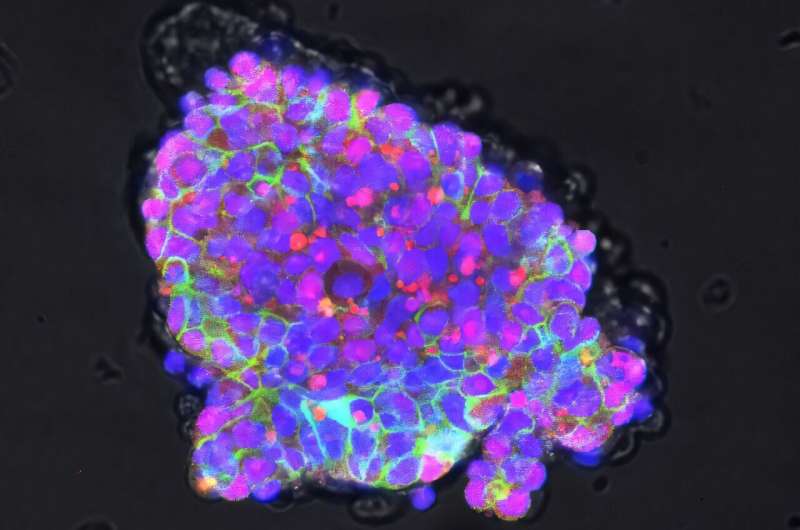

New scientific milestones in the mission to reverse the extinction of the thylacine (Tasmanian tiger) are advancing University of Melbourne research and progressing potential solutions to the broader extinction crisis.
The developments were announced today by Colossal, a de-extinction and species preservation company.
The University of Melbourne’s Thylacine Integrated Genetic Restoration Research (TIGRR) Lab, led by Professor Andrew Pask, has partnered with Colossal since 2022 to accelerate efforts to reverse the extinction of the thylacine.
The thylacine was Australia’s only marsupial apex predator. The last known thylacine died in captivity in 1936 due to human depredation.
The advancements include a newly reconstructed Thylacine genome that is the most complete and contiguous ancient genome of any species to date, estimated to be more than 99.9 percent accurate.
The team has also successfully edited more than 300 genetic markers into cells of a fat-tailed dunnart, the surrogate host for the thylacine project, making it the most edited animal cell to date.
Marsupial artificial reproductive technologies are being similarly progressed, with the research team discovering and optimizing an approach to induce ovulation in a dunnart, and culturing fertilized single-cell embryos over halfway through pregnancy in an artificial uterus device.
“Not only are these major milestones for the thylacine de-extinction project, but the advancements by Colossal in partnership with the University of Melbourne for improving assisted reproductive technologies in marsupials can be applied across the marsupial family tree,” Professor Pask said.
“These technologies will, for example, improve the breeding capacity of critically endangered species in captive populations—such as the closely related Tasmanian devils being bred to help fight against their extinction from the devil facial tumor disease.”
Colossal co-founder and CEO Ben Lamm said the advancements in this project are a huge step forward in the company’s mission.
“We are proud to have our work so well received by the Australian and Tasmanian communities and for these communities to be our partners on this journey,” Mr. Lamm said. “We are pushing as fast as possible to create the science necessary to make extinction a thing of the past.”
More information:
To find out more about the Colossal thylacine project, please visit https://colossal.com/thylacine/
Provided by
University of Melbourne
Citation:
New genome reconstruction advances thylacine de-extinction efforts (2024, October 18)
retrieved 18 October 2024
from https://phys.org/news/2024-10-genome-reconstruction-advances-thylacine-de.html
This document is subject to copyright. Apart from any fair dealing for the purpose of private study or research, no
part may be reproduced without the written permission. The content is provided for information purposes only.